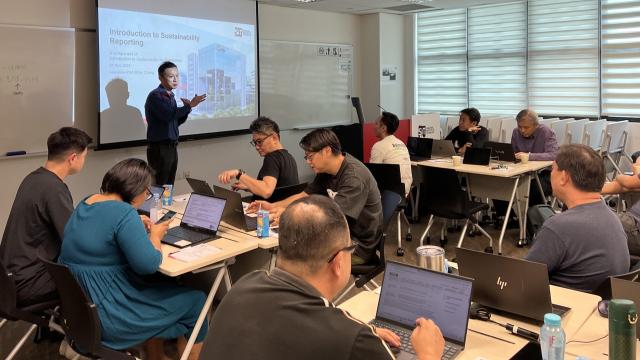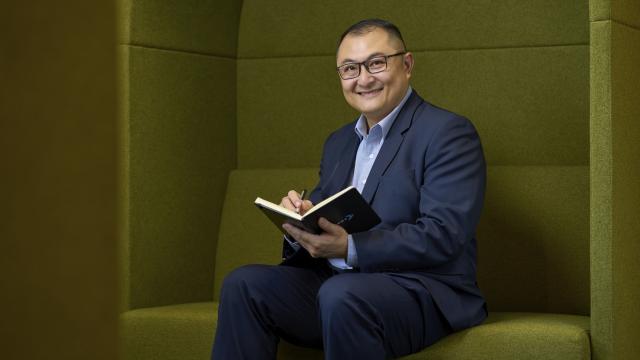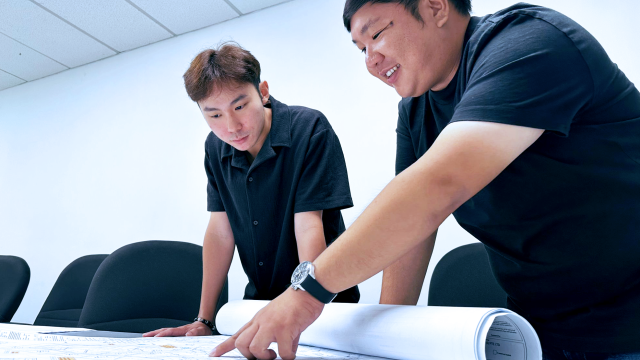Technological advances and digitalisation are rapidly disrupting global labour markets. This means unprecedented challenges, particularly for young Singaporeans, but also presents opportunities for those creative and agile enough to seize them. To support and prepare them for this new era, the education system is evolving as well.
By 2022, some 75 million jobs may be displaced by a shift in the division of labour between humans and machines, according to The Future of Jobs Report 2018 compiled by the World Economic Forum (WEF). It is the inevitable impact of technological breakthroughs — high-speed mobile internet, artificial intelligence, big data analytics, cloud technology — that make up the Fourth Industrial Revolution.
Increased automation and jobs redundancy, however, is not all bad. The same report predicts that 133 new roles may emerge in the same period, thanks to the adoption of new technologies. But WEF founder and executive chairman Mr Klaus Schwab warned in the report that greater investments in education and training are needed to help workers adapt in this age of rapid, unpredictable economic shifts and technological disruptions.
“New technology adoption drives business growth, new job creation and augmentation of existing jobs, provided it can fully leverage the talents of a motivated and agile workforce who are equipped with futureproof skills,” Mr Schwab was quoted as saying.
This has been echoed by the Singapore government. Speaking at the annual Singapore Economic Policy Forum in October last year, Trade and Industry Minister Chan Chun Sing said the rise of the digital economy poses an ongoing challenge. The emergence of new technologies, however, presents opportunities for the Republic to grow far beyond its present economic potential, he had added.
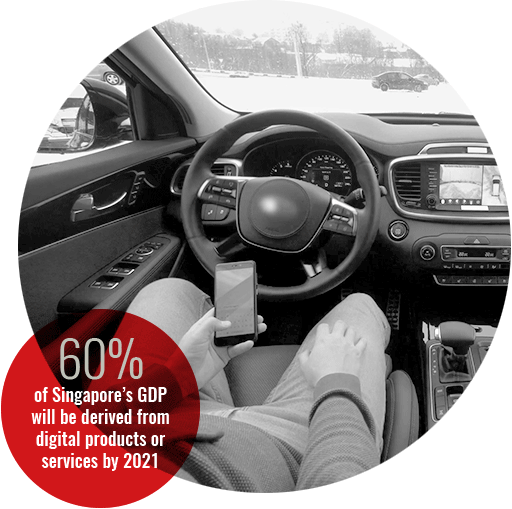
By 2022, some 75 million jobs may be displaced by a shift in the division of labour between humans and machines
LEADING INDUSTRY TRANSFORMATION
The automotive industry is an example of how digitalisation is swiftly transforming the once familiar. Mr Dan Chia, an industry veteran of 17 years and now senior lecturer at the Singapore Institute of Technology (SIT)’s infocomm technology cluster, highlighted how the rise of the connected car and autonomous driving has seen tech players come into direct competition with “traditional automotive players”.
Even the Ministry of Transport and Land Transport Authority has come on board, launching various initiatives aimed to test and deploy autonomous vehicles in Singapore, he said. “These initiatives have placed Singapore as one of the global top spots in attracting talents and potential for new businesses — this was not apparent a decade ago,” said Mr Chia. British technology company Dyson, which designs and manufactures household appliances such as bladeless fans and vacuum cleaners, had announced in October 2018 that they will produce their electric vehicle here. Said Mr Chia: “It is an unprecedented move.”
This transformation has also brought about a change in manpower needs. “The automotive industry now needs multi-disciplinary engineers, who have knowledge and skillsets in hardware and embedded software,” he said.
To equip students with those knowledge and skills, SIT is currently partnering automotive manufacturing company, Continental Singapore, where Mr Chia spent 13 years of his career prior to becoming a faculty member, in its Telematics (Intelligent Transportation Systems Engineering) degree programme. Said Mr Lo Kien Foh, President and CEO of Continental Singapore: “The programme will equip graduates with a well-rounded engineering capability and much needed hands-on experience to make them industry-ready.”
Things are also stirring in the food industry. The sector’s traditionally labour-intensive operations are moving towards a more sustainable model incorporating technology, said Associate Professor Wong Shin Yee, deputy programme director of the SIT-Massey University joint degree programme in Food Technology.
“Moving forward, food technologists will play a critical role in this transformation roadmap,” said Assoc Prof Wong. “We have seen more and more SMEs hiring their first food technologist.”
Among them is Mr John Cheng, director of Cheng Yew Heng Candy Factory, Singapore’s oldest manufacturer of rock sugar, and red and black jaggery sugar. Having worked for his family’s 72-year-old business for a decade, Mr Cheng is looking to modernise the business’s manufacturing processes. “Unfortunately, in terms of knowledge, we were limited. There’s not much to refer to also within the food sector, as we are one of the few sugar manufacturers here,” he said.
Mr Cheng decided to tap on SIT’s chemical engineering and food technology cluster for help. “The students [in the food technology degree programme] help us better understand the scientific process — how sugar crystallisation occurs, bearing in mind all the environmental factors,” explained Mr Cheng. “Through the students’ laboratory work, we were able to adopt solutions that let us grow sugar crystals more efficiently in our factory.”
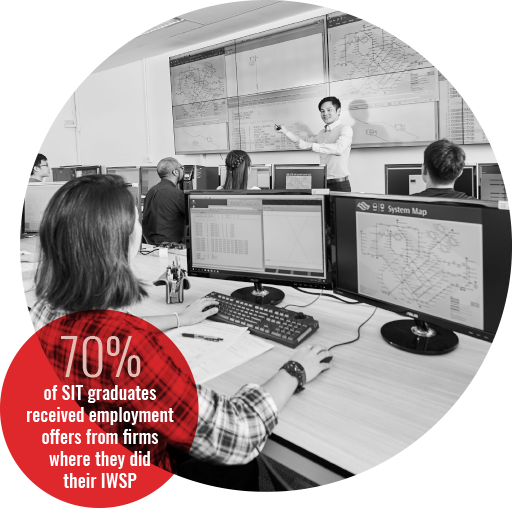
Applied learning prepares students directly for industry demands and requirements as all degree programmes are created based on industry needs
LEARN, UNLEARN AND RELEARN
The collaboration between Cheng Yew Heng Candy Factory and SIT is just one of many that epitomises the university’s applied learning approach. Through modules designed for industry relevancy and which features the Integrated Work Study Programme (IWSP) — a compulsory eight to 12 months of relevant work within the course of their studies — students are able to directly use their knowledge to provide solutions for real-world challenges.
Dr Zhou Yi, an associate professor in SIT’s engineering cluster, believes such applied learning experiences give students an edge when it comes to securing employment. “Applied learning prepares students directly for industry demands and requirements as all degree programmes are created based on industry needs,” said Assoc Prof Zhou, who is himself currently applying his knowledge in the real world — he is on secondment to SMRT Trains where he develops standards, processes and technologies aimed at improving the safety, quality and productivity of maintenance work.
In the past two years, over 75 per cent of students from the IWSP with SMRT have joined SMRT’s engineering and management associates programme, which prepares graduates to be future engineering leaders.
Similarly, final year students in the Food Technology programme are expected to spend one trimester on an individual food technology project, based on industrial settings, to solve problems faced in the food industry. “Students work under academic supervision and learn to integrate their basic food technology knowledge into practice. This project module is an opportunity for the students to experience complex industrial problems,” explained Assoc Prof Wong.
IWSP also enables students to establish a strong sense of belonging to the company they are attached to, said Mr Chia. This, coupled with the work experience and industry exposure, will provide them with “a higher chance of being employed”.
SIT’s Telematics (Intelligent Transportation Systems Engineering) degree programme, for example, works with the university’s Centre for Career Readiness to provide students with up to 20 months of industry experience across the programme’s three years. “These 20 months will enable the student to learn, adapt and provide added value relevant to the company, thus performing like an experienced engineer even though they are not an official employee as yet.”
Such a head-start is critical with workforce transformations no longer just in the distant future. Companies are seeking to harness new and emerging technologies to reach ever higher levels of efficiency and expand into new markets. In order to succeed in a rapidly evolving economy, students and educators have to both take proactive approaches to learning, unlearning and relearning, from classrooms, into the workforce, and beyond.
This article was adapted from Channel NewsAsia with the permission of MediaCorp BrandStudio.

